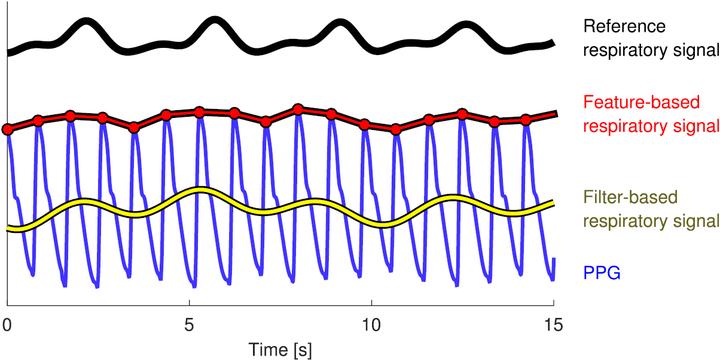Extraction of respiratory signals from the electrocardiogram and photoplethysmogram: technical and physiological determinants
 Image credit: Unsplash
Image credit: Unsplash
Abstract
Objective: Breathing rate (BR) can be estimated by extracting respiratory signals from the electrocardiogram (ECG) or photoplethysmogram (PPG). The extracted respiratory signals may be influenced by several technical and physiological factors. In this study, our aim was to determine how technical and physiological factors influence the quality of respiratory signals. Approach: Using a variety of techniques 15 respiratory signals were extracted from the ECG, and 11 from PPG signals collected from 57 healthy subjects. The quality of each respiratory signal was assessed by calculating its correlation with a reference oral-nasal pressure respiratory signal using Pearson?s correlation coefficient. Main results: Relevant results informing device design and clinical application were obtained. The results informing device design were: (i) seven out of 11 respiratory signals were of higher quality when extracted from finger PPG compared to ear PPG; (ii) laboratory equipment did not provide higher quality of respiratory signals than a clinical monitor; (iii) the ECG provided higher quality respiratory signals than the PPG; (iv) during downsampling of the ECG and PPG significant reductions in quality were first observed at sampling frequencies of <250 Hz and <16 Hz respectively. The results informing clinical application were: (i) frequency modulation- based respiratory signals were generally of lower quality in elderly subjects compared to young subjects; (ii) the qualities of 23 out of 26 respiratory signals were reduced at elevated BRs; (iii) there were no differences associated with gender. Significance: Recommendations based on the results are provided regarding device designs for BR estimation, and clinical applications. The dataset and code used in this study are publicly available.
Recognition
Featured in Physiological Measurement’s Highlights of 2017.